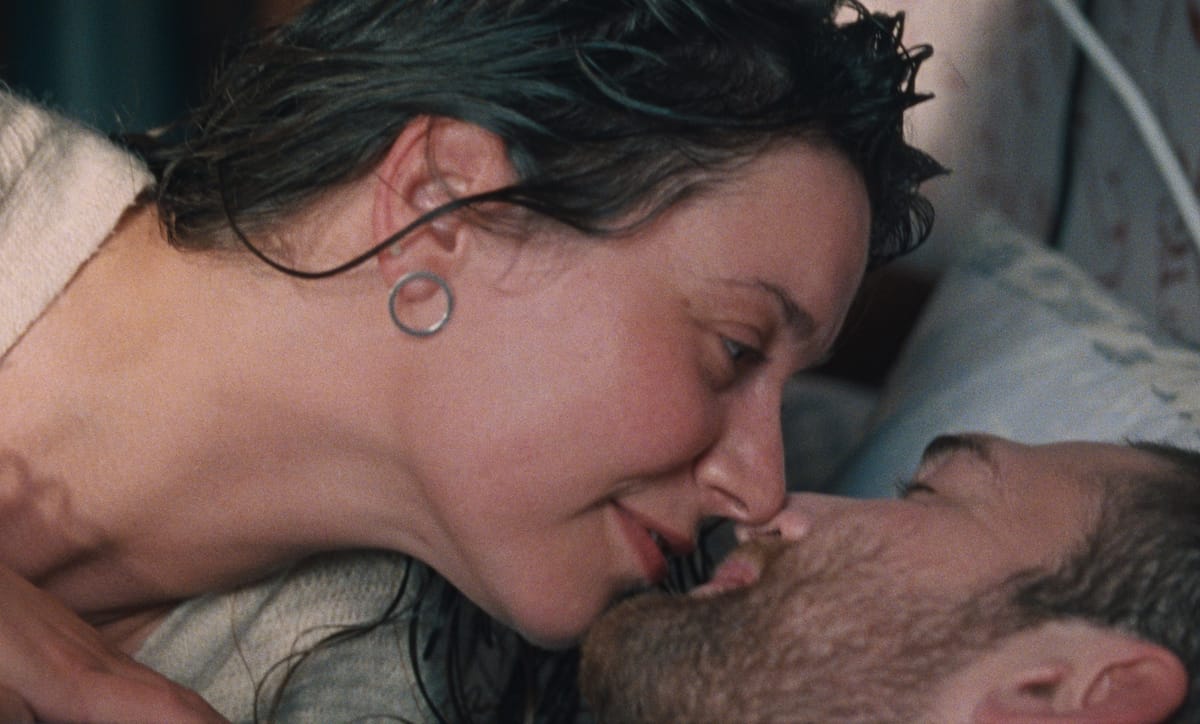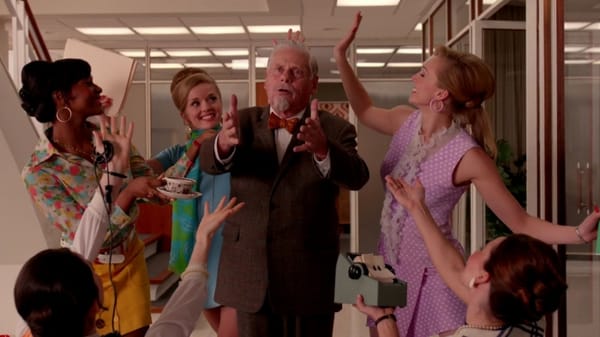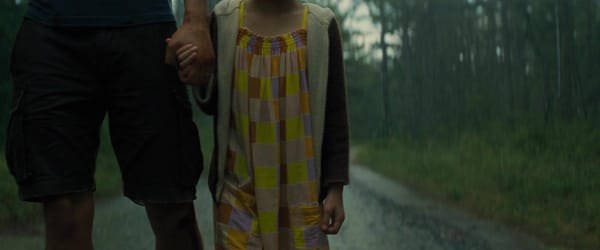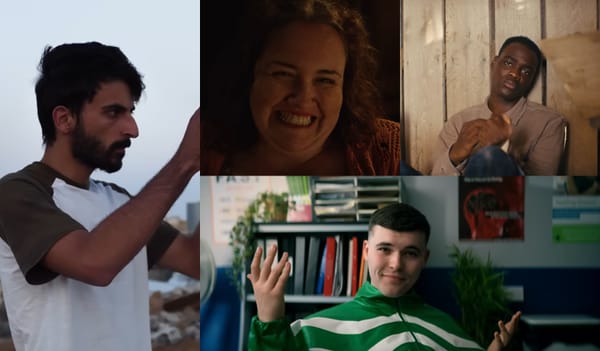Sundance Reviews: Magazine Dreams, The Starling Girl, Cat Person, Slow, and Fancy Dance
On the five titles from the Sundance Film Festival that I watched from home this year.

Greta Grinevičiūtė, Kęstutis Cicėnas, Slow, Totem Films
Did you know that if you live in the U.S. you can attend the Sundance Film Festival from the comfort of your own home? The online screening room is a feature I hype to aspiring writers and filmmakers anytime I can, as well as to casual movie fans, because I think it’s incredible that anyone with an internet connection and $20 can see (and champion) a brand new hidden gem – or what could turn out to be one of next year’s Oscar winners.
As someone who typically covers more television than film, I have no reason to shell out thousands of dollars to travel to Utah for Sundance, but I’ve also always wanted to attend. These days, thanks to the fest going hybrid after 2020, I can watch some of the most interesting films in the festival program without even getting out of bed. Accessibility is a wonderful thing.
Last year, I covered a couple of Sundance films, but this year, thanks to a combination of a crowded work schedule, a mean stomach bug and near-simultaneous chronic illness flare-up, and persistent wifi problems, I opted not to aggressively pitch my coverage. Instead, on the last day of the festival, I’m sharing my quick takes on the five films I caught online directly with you. With the exception of Slow, which now has a global deal with Totem Films, I don’t think any of these titles have sold yet, so if you’re eager to see one, keep an eye out for future news about its distribution.
Slow
Lithuanian filmmaker Marija Kavtaradze’s romance Slow follows a dance teacher named Elena (Greta Grinevičiūtė) and a sign language interpreter named Dovydas (Kęstutis Cicėnas) who meet and fall in love. Their new relationship meets an unexpected obstacle, though, when Dovydas tells Elena he’s asexual. Slow is an intimate, tranquil romantic drama that covers territory that’s rarely been seen on screen. With lovely, expressive direction (especially in its mostly music-free dance scenes) and a story built through small but vital moments, there’s a lot to love here.
But I also found myself more irked than charmed by the film’s love story, as it centered viewers firmly within the perspective of boundary-pushing Elena instead of kind, passive Dovydas. It’s a movie that calls to mind the adage that every fight you have is your first fight all over again, and it’s also one that asks us to be endlessly patient with a hungry, sometimes inscrutable protagonist and the man who loves her.
None of this makes Slow a bad movie, but it does make its representation of a rarely-portrayed sexual identity a bit more complex than the simple ‘unorthodox romance’ logline that keeps popping up in coverage of the film might suggest. Two naturalistic performances and a persistent sense of intimacy keep the film afloat, even as Slow frustratingly side-steps its own central conflict until its understated but emotional conclusion.
Cat Person
Kristen Roupenian’s New Yorker short story “Cat Person” went off like a bomb when it arrived in late 2017, just months after the #MeToo movement forced men of the world to look at issues of consent and power more closely than we ever had before. The story is about a college girl named Margot entering into an uneven relationship with an older man with whom she eventually sleeps despite herself. It takes a nuanced and appropriately destabilizing approach to sexuality and 21st-century relationships, leading readers through a minefield of tiny red flags to a conclusion that’s expected and dismaying all at once.
The new film adaptation of Cat Person, directed by Booksmart co-writer Susanna Fogel and led by Emilia Jones (CODA) and Nicholas Braun (Succession), does all of that with plenty of runtime to spare. Instead of ending on the subtle knife-twist note that closed Roupenian’s short story, Michelle Ashford’s script continues on with a third act that turns it into something closer to a horror movie – and a particularly on-the-nose one at that. Braun and especially Jones are great in their roles, and Cat Person includes some clever upgrades from the source material, as when paranoid Margot pictures vivid worst-case scenarios superimposed over real-life interactions.
But Cat Person suffers from a tonally imprecise third act, one that doesn’t so much one-up the source material as it does highlight its most deliciously ambiguous themes in bright, attention-grabbing neon. The film doesn’t quite collapse under the weight of its ambitious detour, but it comes close, and other elements (like a pivotal scene in which Margot awkwardly narrates to herself) don’t work either. Cat Person has a lot on its mind about the tightrope walk of sexuality, longing, and fear that women must walk in the true-crime-podcast and dating-app world, and a nimble performance by Jones elevates even its weaker parts.
Fancy Dance
Filmmaker Erica Tremblay makes her feature directorial debut with Fancy Dance, a road trip drama-thriller set against the backdrop of the Seneca-Cayuga Nation in Oklahoma. The film stars the always-underrated Lily Gladstone as Jax, a woman whose life is thrown for a loop when her sister goes missing. While Jax is grimly realistic about the prospect that her sister may have become another statistic in the epidemic of missing and murdered Indigenous women, she puts on a brave – if not exactly maternal – face for her niece, Roki (Isabel Deroy-Olson), who holds out hope for her mother’s return.
The majority of Fancy Dance follows Jax and Roki as they attempt to get to a powwow while anti-Indigenous systems and not-so-well-meaning relatives get in their way. Some elements of the film didn’t work for me; the script at times felt undercooked, and the cinematography was unpolished. But Gladstone’s performance, the grim but sincere story, and an ending that brings it all home make Fancy Dance a worthwhile watch. Tremblay also has a clear directorial vision that makes me eager to see what she does next.
Magazine Dreams
I’ve rarely ever watched a film that made me as viscerally uneasy as Magazine Dreams, a fantastic work of art from writer-director Elijah Bynum. Bynum has phenomenal control over the image he presents of his subject, and the formal brilliance of the direction, sound design, and the film’s other cinematic elements contrast cleverly with its protagonist’s own complete lack of control. Magazine Dreams is about Killian (an unforgettable Jonathan Majors), a wannabe professional bodybuilder whose life becomes a never-ending car crash thanks to a toxic mix of trauma, mental illness, social isolation, and ‘roid rage.
With a two-hour runtime, Magazine Dreams yanks viewers through the wringer more times than I can count, but does so with deliberate purpose and masterful skill. The film reads like an explicit homage to Martin Scorsese’s Taxi Driver, yet it deepens and widens a classic story of destructive antisocial behaviors by telling it through the lens of, as Killian calls himself pointedly ahead of a run-in with the police, “a 6’1” Black man.” Magazine Dreams is a master class in tension, but fear and dread aren’t the only feelings it confronts us with. Just when Killian seems unforgivable, he’ll do something that unlocks a deep, conflicting well of viewer sympathy, with a cringe of pity for good measure. Bynum’s film is richly layered, deliberate in its disorder, and impossible to look away from – no matter how much it hurts to watch.
The Starling Girl
Now 24, Eliza Scanlen has been playing complicated teen characters on screen for years, from Baby Teeth to Sharp Objects to The Devil All The Time. Her filmography keeps getting better, and her work in Laurel Parmet’s heady religious drama The Starling Girl is no exception. Scanlen stars as Jem, a seventeen-year-old churchgoer who lives in an extremely devoted and close-knit community. Her family and congregation’s passion is fervent, but it’s also clearly patriarchal, as the women around Jem single her out for minute missteps like a visible bra strap or a dance move that’s not “God-focused.”
So many movies about religion are content to portray the rituals of faith without actually digging into the effect they have, but The Starling Girl nails the way Christian repression – coordinated and enforced by several sprawling church families under the guise of keeping one another safe and spiritually on track – can so wholly mute a young woman’s spirit. When Jem starts to lean into the romantic attention of her married youth pastor, Owen (Lewis Pullman, also great), it’s a mistake that’s as understandable as it is ill-advised.
The Starling Girl seems familiar on paper, but it distinguishes itself by creating a fully realized portrait of its characters and community. The film succeeds in large part because it refuses to boil its central complexities down to the moral or immoral, instead letting us get caught up in the story of a girl whose only path to self-understanding may also be a path to harm.




